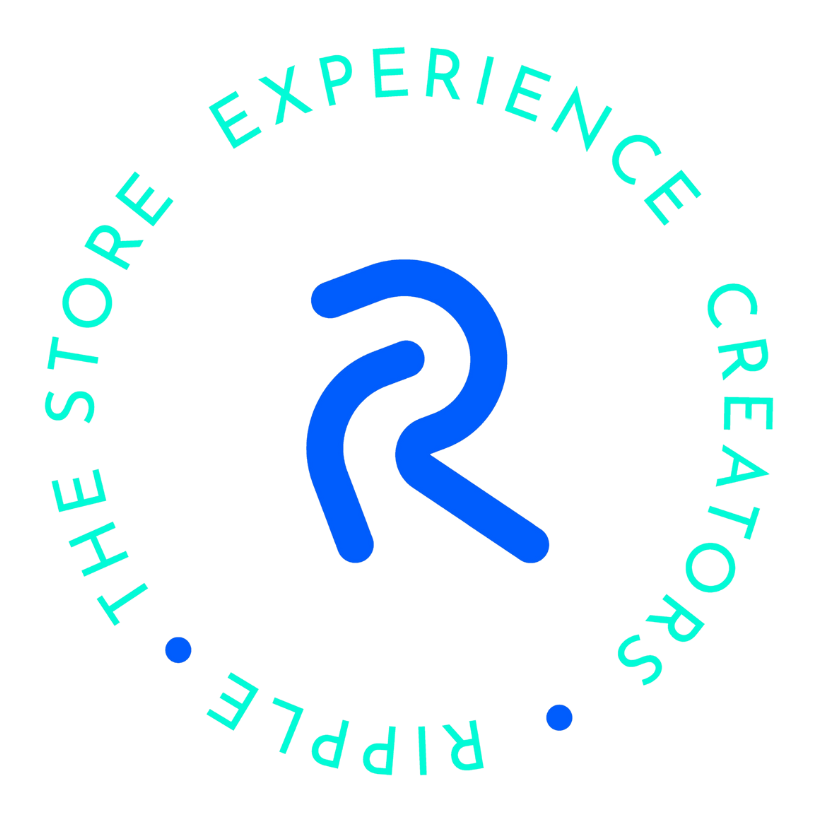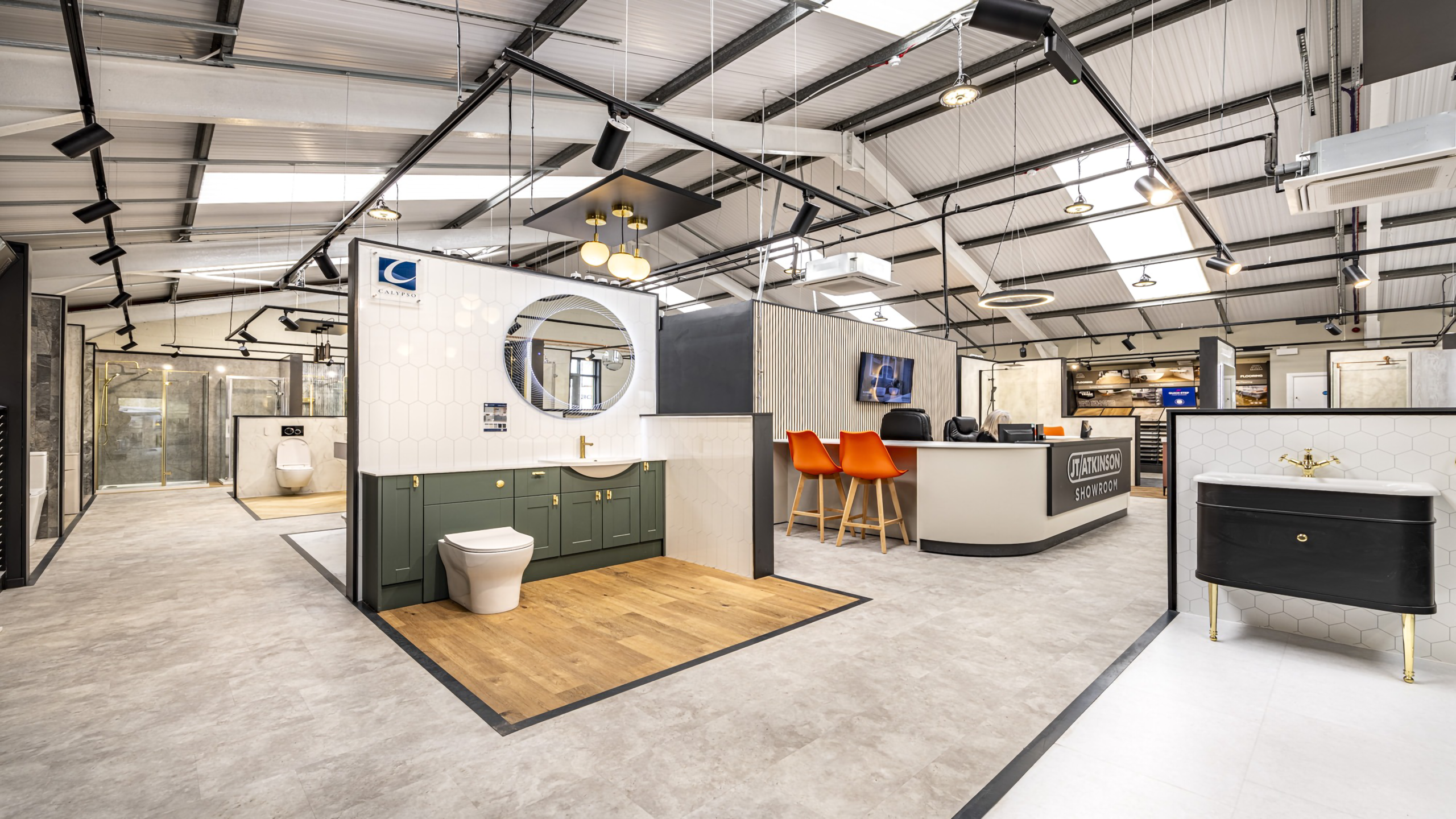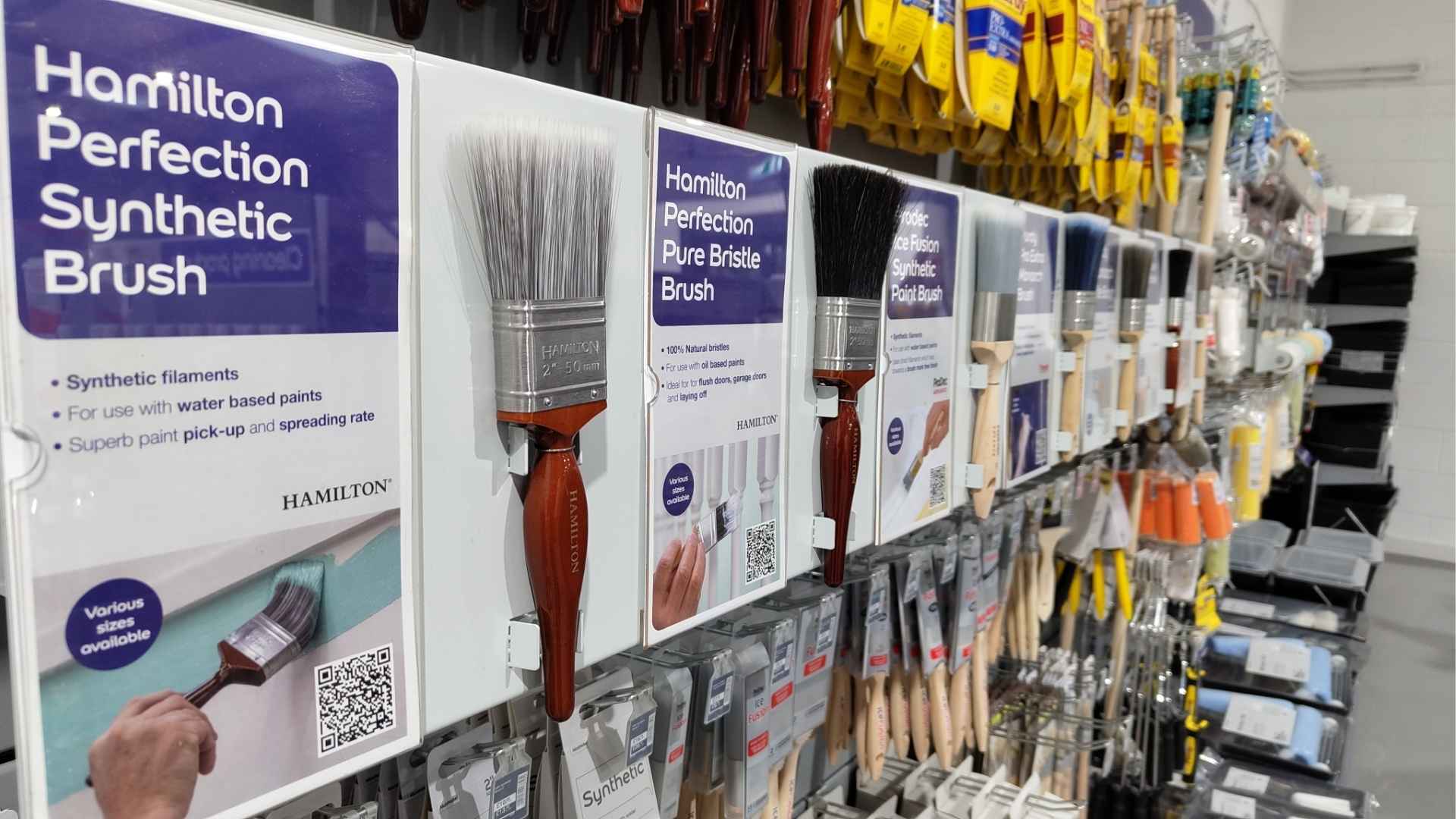As online shopping continues to dominate the retail industry, shopper appetites for physical engagement remain significant.
Online shoppers are searching for a memorable and engaging experience that establishes a sense of trust and connection with a brand. So, how do retail spaces bridge this gap, and how does retail showroom design increase sales?
At Ripple, we specialise in crafting showrooms that go beyond simply displaying products.
We leverage our design expertise to create immersive experiences that resonate with your target audience and maximise the sales value of in-person touchpoints. Discover how showrooms can boost your bottom line, and how their lasting impact directly translates into your sales forecasts…
Do Showrooms Increase Sales?
Is investing in a showroom worth it? Well-designed showrooms can significantly increase sales by:
- Enhancing customer engagement: Interactive displays and product demonstrations lead to a deeper understanding and appreciation.
- Triggering impulse purchases: Strategic placement and visually appealing setups can entice customers to buy on the spot.
- Building brand loyalty: A showroom reflects your brand identity, fostering a stronger connection with customers.
What Must be Considered When Planning a Store Layout?
Your brand’s showroom is likely the first touchpoint your customer has had with you outside of the online world. A detailed plan that addresses your overall goal is essential to maintain control and carefully manage the showroom and the customers’ experience.
This plan should also outline the showroom design, as it will directly impact your target audience, available space, budget, and key elements such as products and customer service.
For example, if you’re setting up a showroom to feature promotional items, a circuit layout can effectively guide customers past all products, enhancing exposure and sales opportunities.
In contrast, a showroom that aims to communicate a brand and its messaging will likely emphasise customer interaction. These spaces often contain fewer products and instead focus on interactive displays, comfortable seating areas, knowledgeable staff, and areas for product demonstration.
For any showroom design you are planning, you must ensure you address the key points:
- Target Audience: Understanding your ideal customer’s demographics and shopping habits is key. This will influence the overall design and product selection of your showroom.
- Products: The size, functionality, and interactivity needs of your products will determine the layout and features required in your showroom.
- Space and Budget: The size of your space and your budget will influence layout choices, materials, and the level of detail you can achieve.
- Traffic Flow: Plan a clear flow for customers to move through the space. This encourages browsing, highlights key products, and avoids bottlenecks.
- Visual Merchandising: Use effective lighting, displays, and signage to create a compelling and informative experience for customers.
By carefully considering these factors, you can create a showroom that effectively showcases your products, engages your customers, and drives sales.
What Are the Different Types of Store Layouts?
There’s no one-size-fits-all approach to showroom layouts. The optimal design depends on your industry, product range, and target audience.
However, there are several showroom layouts you can take inspiration from to maximise the impact of your brand, its products, and shoppers’ overall experience.
1. Grid Layout
Suitability: You have a large inventory and want customers to easily browse and compare products.
Benefits: It’s familiar and efficient, allowing customers to navigate aisles and find what they need quickly. It also maximises space available especially if limited.
Examples: Grocery stores, hardware stores, and appliance stores.

2. Loop Layout:
Suitability: You want to showcase a wider variety of products but with a more curated feel.
Benefits: It maximises wall space and creates a natural flow, guiding customers past a broader selection of products
Examples: Clothing stores, furniture stores, personal care, beauty and electronics stores.

3. Free-Flow Layout:
Suitability: You have a focus on unique or high-end products and want to highlight them individually.
Benefits: It allows for creative displays and product groupings, fostering engagement and discovery.
Examples: Art galleries, high-end furniture stores, and car dealerships.

4. Fixed Path Layout:
Suitability: You have a complex product or a product journey you want customers to take.
Benefits: It ensures customers are exposed to every product and controls the flow of information and highlights key features in a specific order.
Example: IKEA stores, and museums with product displays.

Many showrooms combine elements of these layouts to create a unique experience. For example, a clothing store might use a grid layout in the main area and a free-flow layout for a featured collection.
How Does Retail Showroom Design Increase Sales?
Showrooms aren’t just fancy product displays – they’re strategic spaces designed to ignite customer interest and drive sales.
Interactive displays and live product demonstrations create a hands-on experience that goes far beyond static images online.
When customers try on a piece of clothing or test out a set of headphones, a deeper engagement is built, allowing for excitement and confidence to build – solidifying the product’s functionality and value.
Taking advantage of the in-person experience can also solidify your brand as one that values customer service. This can be difficult to establish when limited to online communication, yet showroom designs provide a platform for personalised service.
Knowledgeable staff can answer questions, address concerns, and tailor product recommendations to individual needs. This real-time interaction builds trust and fosters a more satisfying shopping experience, leading to happier customers, strong recommendations, and more purchases.
Looking deeper, a showroom design is more than just products; it’s an extension of your brand.
The design elements, from lighting to colour schemes, should reflect your brand identity and values. This creates a cohesive experience that tells a brand story and fosters a stronger emotional connection with customers.
Imagine a high-end car dealership with a sleek, minimalist design – it subtly communicates luxury and innovation, aligning perfectly with the brand image.
Is your showroom design failing to ignite sales? Discover proven strategies to create an immersive customer experience that drives results. Click here to learn more about how we can help.
How Showroom Design Adapts to Different Industries
Showrooms can be powerful sales tools, but the optimal design depends heavily on the industry.
Luxury brands, for example, might use high-quality materials, private consultation areas, and focused lighting to create an air of exclusivity.
The focus in home improvement showrooms shifts to practicality and inspiration. Room vignettes, interactive design tools, and product demonstration areas help shoppers envision the products in their spaces.
Ultimately, the key is to understand your target audience and tailor the showroom design to create a compelling and informative experience that resonates with them.
See how Ripple’s team of showroom design experts has transformed two showroom spaces across different industries, to drive the same showstopping results:
See how Ripple Design Studio transformed a vacant space into a multi-award winning bathroom showroom that wows visitors and drives sales.
Discover how Ripple transformed a space in just 3 months into a haven for paint enthusiasts, showcasing the power of our end-to-end retail design solutions.
The result? A vibrant, immersive space that celebrates Little Greene’s commitment to quality and style.
Ready to Bring Your Vision to Life? Speak to Ripple’s Team of Showroom Design Specialists
Don’t settle for a static product display that fails to capture customer attention. At Ripple, we specialise in crafting showrooms that go beyond just showcasing products. We create immersive experiences that resonate with your target audience and drive meaningful engagement.
Our design team will collaborate with you to understand your brand and target audience. We’ll then develop a strategic showroom layout and design elements that foster customer interaction, highlight key features, and ultimately drive sales.
Your showroom is a powerful extension of your brand identity. Turn browsers into buyers and don’t let your showroom become a missed opportunity. Contact Ripple to learn more about showroom design, and how we can help improve your retail environment to generate more sales.




